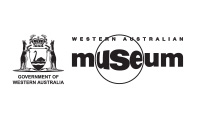8 September 2016
A History of the World in 100 Objects
A rare 2000 year old bronze sculptural head of the Roman emperor Augustus is one of the unique treasures in the British Museum’s A History of the World in 100 Objects exhibition, which opens at the National Museum of Australia in Canberra.
In its only east coast venue, A History of the World in 100 Objects uses items from around the globe to explore the last two million years of human history, sourcing the oldest objects from the British Museum’s collection and incorporating those from the present day.
From stone to gold, clay to plastic, the exhibition traces human experience through objects people have made, including a 1.6 metre tall Assyrian relief, the famous Assyrian clay Flood Tablet (from modern Iraq) inscribed with the story of a great flood and an Ark and a small, but exquisite, gold llama from Peru.
‘These rare objects from around the world challenge our notions of human history and throw new light on how we shaped the world in which we live – and how we continue to shape it,’ said National Museum director, Dr Mathew Trinca.
‘I urge Australians to take advantage of a unique opportunity to see these objects and to explore the stories behind them,’ said Dr Trinca.
‘For me, the most fascinating aspect of this exhibition is its unusual approach to history, using objects rather than texts. By looking closely at the things people made and used, we gain access to those parts of our shared past that were never recorded in literature, as well as cultures that never developed the need for writing,’ said Dr Belinda Crerar, curator of A History of the World in 100 Objects.
A History of the World in 100 Objects takes visitors on a journey through time and place.
An African stone-chopping tool that is one of the first known human made implements, the endearing Lewis Chessmen (which found fresh fame following their inclusion in the 2001 film adaptation of Harry Potter and the Philosopher’s Stone), a Basket from western Arnhem Land, Albrecht Dürer’s celebrated print The Rhinoceros, gold coins of Croesus and an elegant early bird-shaped stone pestle from Papua New Guinea, are among the huge range of objects on show.
More contemporary objects include the David Hockney print, ‘In the Dull Village’ showing two men in a bed, a credit card and a solar powered lamp. The exhibition is an adaptation of a 2010 BBC / British Museum radio series of the same name.
Exclusive to the Australian tour is the bronze Head of Augustus from Meroë, which is one of the most important surviving portraits of Rome’s first emperor.
The National Museum chose to include a 101st object representing a globally recognised Australian innovation. The CSIRO WLAN Test Bed (the precursor to modern Wi Fi) is the exhibition’s 101st object.
A History of the World in 100 Objects on show in Canberra: 9 September 2016 – 29 January 2017.
Media launch
A behind the scenes glimpse of the 8 September 2016 media launch. Hear from National Museum Director Dr Mathew Trinca and British Museum Curator Belinda Crerar, on why this is an exhibition 'like no other'.
Background
This exhibition uses 100 objects from the British Museum’s encyclopaedic collection to explore human history from two million years ago to the present day.
Inspired by the highly-acclaimed 2010 radio series and book, which was produced in partnership with the BBC and Penguin Books, the carefully selected objects communicate the ideas and concerns of the people who made and used them, taking every visitor on a unique and compelling journey through time and across the globe.
A History of the World in 100 Objects invites visitors to travel along a timeline of human history and object creation revealing a series of compelling, and often very personal, human stories. Visitors will encounter this rich story through a series of thematic sections, examining issues as diverse as faith, power and global exploration.
The objects in the exhibition represent a vast range of materials — from stone to gold and clay to plastic. They vary in size, from a large Egyptian sculpture to a small exquisite gold llama from Peru.
A special highlight of the exhibition is the bronze head of Augustus, one of the most important surviving portraits of Rome’s first emperor. Originally part of a statue of Augustus that was thought to have been deliberately beheaded in antiquity, the bronze caused an international sensation when it was excavated in Sudan in 1910. The head features in a section exploring power and philosophy between 700 BCE and 100 CE, and speaks directly of the leader’s need to control his public image across a vast empire.
The variety of material included in the exhibition creates a rich, absorbing and visually impressive celebration of manmade objects. Exploring the past through objects allows us to understand our present, and celebrate our shared experience and common humanity.
Facts
A History of the World in 100 Objects will run from 9 September 2016 – 29 January 2017 in Canberra as its only east coast venue. This is the British Museum touring global exhibition, championed by British Museum director Neil MacGregor (inspired by a BBC radio show – which has attracted nearly 50 million downloads since it first aired in 2010) – which tours key objects from around world.
- The exhibition uses 100 objects from the British Museum’s collection to explore human history from two million years ago to the present day.
- The exhibition is an adaptation of a 2010 BBC/British Museum radio series of the same name.
- The exhibition is arranged chronologically in eight sections taking visitors on a timeline of human history from 2-million-years BCE, through to the development of agriculture and the first cities; the development of empires; the evolution of religion; trade and invasion; Medieval times; exploration; and the industrial revolution up to the present day.
- Exclusive to the Australian tour is the bronze ‘Head of Augustus’ from Meroë, which is one of the most important surviving portraits of Rome’s first emperor.
- Other key objects include:
- Lewis Chessmen, found unexpectedly on a beach on the Isle of Lewis in Scotland in 1831. Carved from walrus ivory and whale tooth between around 1150 and 1200. At this time the Isle of Lewis was part of the Kingdom of Norway. Found fresh fame after their inclusion in the 2001 film adaptation of Harry Potter and the Philosopher’s Stone.
- Assyrian clay Flood Tablet (from modern Iraq) – a pre-Christian version of the Noah’s Ark story.
- African stone chopping tool, dated to 1.8 – 2 million years ago.
- Pandanus Basket from western Arnhem Land.
- Small gold llama from Peru - the Incas revered gold as the sweat of the sun. Llamas were the Incas' most important domestic animal.
- Albrecht Dürer’s celebrated print The Rhinoceros - woodcut printing allowed drawings to be mass produced.
- Gold coins of Croesus - some of the world's first coins, produced in Lydia, western Turkey, over 2500 years ago.
- Elegant early bird-shaped stone pestle from Papua New Guinea.
- Contemporary objects include:
- David Hockney print ‘In the dull village’ depicting two men in a bed.
- Credit card that is compliant with Islamic Sharia law – meaning no interest can be charged on the card.
- Solar powered lamp.
- The National Museum has selected the CSIRO WLAN Test Bed (the precursor to modern wi-fi) as the 101st Australian object to be displayed in the exhibition.
Contact us
For more information please contact Tracy Sutherland, (02) 6208 5338 / 0438 620 710 or media@nma.gov.au
The presentation of this exhibition is a collaboration between the British Museum, the Western Australian Museum and the National Museum of Australia.
The exhibition A History of the World in 100 Objects is supported by the Australian Government International Exhibitions Insurance (AGIEI) Program. This program provides funding for the purchase of insurance for significant cultural exhibitions. Without AGIEI, the high cost of insuring significant cultural items would prohibit this major exhibition from touring to Australia.








